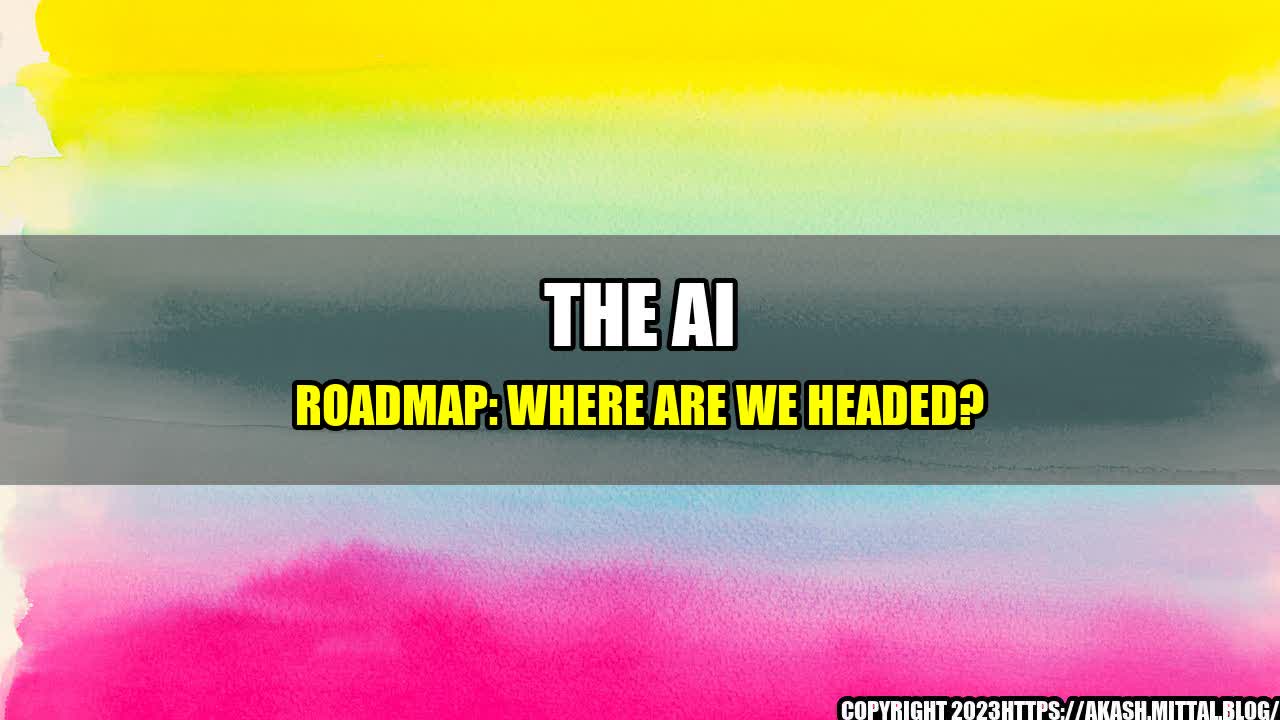
When I was in school, I had a friend called Jack who always talked about a world where computers would be able to think and learn like humans. At the time, I thought he was just daydreaming, but as it turns out, he was ahead of his time. Today, we are closer than ever to creating intelligent systems that can learn, adapt, and make decisions on their own. In this article, we will explore some of the latest developments in AI, including the ChatGPT AI roadmap, and examine where we are headed in the field of artificial intelligence.
The ChatGPT AI roadmap is one of the most significant developments in AI today. It is an ambitious project that aims to develop advanced AI systems that can learn and communicate with humans in a natural way. This roadmap has been developed by OpenAI, a research institute dedicated to advancing artificial intelligence in a safe and beneficial way.
The ChatGPT AI roadmap is built on the foundation of GPT-3, an AI language model that can generate human-like text. This model has gained fame for its ability to answer complex questions and generate realistic text. The ChatGPT AI roadmap aims to take this technology to the next level by developing AI systems that can converse with humans in a natural way.
Another promising development in the field of AI is the use of AI in healthcare. AI-powered systems are being used to diagnose diseases, monitor patients, and develop new therapies. For example, researchers at Duke University have developed an AI-powered system that can detect breast cancer with a high degree of accuracy. This system uses deep learning algorithms to analyze mammograms and identify signs of cancer.
The future of AI is both exciting and challenging. On the one hand, we are likely to see the development of AI systems that can perform tasks that are currently beyond human abilities. These systems could revolutionize industries such as healthcare, transportation, and finance. On the other hand, we must be cautious about the potential risks associated with advanced AI systems.
One of the challenges with advanced AI systems is that they can be difficult to understand. As AI systems become more complex, it becomes harder to trace their decision-making processes. This can create a risk of unintended consequences, such as bias or error. To address this, researchers are working on "explainable AI" that can provide insights into the decision-making processes of AI systems.
To wrap up, here are three key points to remember about the AI roadmap:
Finally, I would like to emphasize the importance of responsible AI development. As we create more advanced AI systems, we must ensure that they are developed in a safe and ethical way. This means working to minimize unintended consequences, such as bias or error, and engaging with stakeholders to ensure that the benefits of AI are shared fairly.
Hashtags: #AIdevelopment #ChatGPT #explanableAI #healthcareAI
Category: Technology/Artificial Intelligence
Curated by Team Akash.Mittal.Blog
Share on Twitter Share on LinkedIn